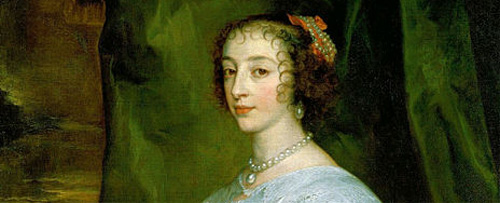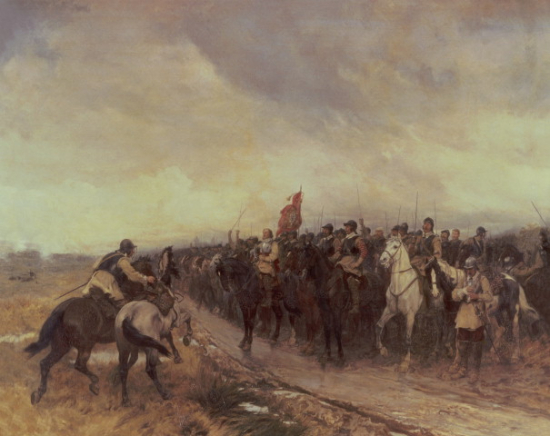2.2.c Case Study: The English Civil War
Teachers Report: Hannah Mohon, Huntcliff School
Huntcliff School is a mixed Secondary School with Specialist Status in Humanities. There are about 500 students. The School was classified as ‘good' by Ofsted in 2006. The catchment includes a mixture of students, with a higher than average number of students entitled to f.s.m.
Main Theme
Considering the Causes of the Civil War.
Class
The resource was designed for use with mixed ability Year 8 groups.
Voting System Used
GeneeUs handsets provided by Interactive Education.
Core Aim
The teaching of this topic often seems to focus on delivering information to students about the reasons for the Civil War. The aim of this resource was to challenge students to draw (and defend) their OWN conclusions about how different events would lead to a changing view of the fitness to rule of Charles I.
The aim was to develop an idea of the complexities of the impact of the actions of Charles I on different sections of the UK population at different times and to encourage deep thinking about just when the King would lose the support of different sections of the population.
Description of lesson
In this lesson each pair of students was given a role play card about a different historical character. Each role play card included basic information about who the person was and their role in society (e.g. Janet Geddes - a poor Scottish widow), more detailed information about their beliefs (e.g. You are a Puritan. You want simple church services and preaching from the Bible and will oppose any Catholic ideas being introduced into the Church. You are unlikely to find out much about changes in the church in England but will be furious if any changes are made to the Scottish Church. You don't spend much time thinking about politics, you'll only be bothered about things which directly affect your life), and some hints about their character (e.g. you may be poor but you are strong minded and prepared to stand up for your beliefs).

Depending on the complexity of the beliefs and influences on the historical character the role play cards were graded * (easy), ** (moderate), *** (challenge). This allowed for easy and effective differentiation among students taking part.
Students were encouraged to read the information about their character and discuss what they might think of Charles I when he first came to the throne.
Students were then asked to consider different events in the run up to the Civil War (e.g. Charles marrying Henrietta Maria in 1625) and were given some information on the IWB about each.

They then voted in role on whether they Strongly Agreed Charles should be King, Agreed, Had No Opinion, Disagreed, or Strongly Disagreed.
My original plan had been to use the pie chart feature to encourage students to recognise that different events were causing Charles to alienate increasing sections of the population as they saw on the pie chart a greater proportion of characters disagreeing that Charles should be king. In fact technological problems and my lack of familiarity with the software made this a non starter, so I combined some ‘old technology' by issuing each pair of students with an ordinary small whiteboard and pen. This was very powerful as students noted down their reasoning for each voting choice and held it up after the vote to be used as a basis for discussion. One pair of students wrote, ‘I'll give him the benefit of the doubt this time'. When prompted, they explained that they believed in the divine right of kings so they didn't want to disagree with Charles but he was becoming increasingly irritating and that if taxes rose again they would begin to actively oppose him.
The use of handsets forces students to participate, the pair work encouraged students to discuss their ideas before making decisions, but the use of the whiteboards in tandem with this encouraged whole class participation and discussion at a higher level. What the use of the whiteboards and the discussion really highlighted was any misconceptions in student's understanding that might not otherwise have been picked up - e.g. a belief that Oliver Cromwell always opposed Charles as King, an assumption that people in Scotland (or poor labourers) would automatically know what was happening in Parliament, a lack of understanding of the importance of ideas such as the divine right of Kings at the time etc.

What value did the voting technology add?
The real value of the technology was to challenge the teacher concerned to rethink the way this topic had been taught for a number of years. By opening up the possibility of all students participating in a vote it was possible to design an activity to encourage students to engage with the material in a more active way, and to empathise more strongly with the conflicting beliefs of some of the characters. It also helped students to understand that opinions change for a variety of different reasons.
Pupil Responses
The students seemed to really enjoy and be stimulated by this activity. Something designed to take up about 20 minutes ended up taking about double that, as students became so engaged in discussion. There was a knock on effect in future lessons too as students showed more empathy with characters which they had considered in role e.g. when we considered farm workers being forced to take sides and fight in the Civil War one student commented ‘That's so unfair - a farm worker didn't even know what was going on or have an opinion on it so why was he being forced to fight?'
Sometimes gifted and talented students have given a lukewarm reception to using interactive handhelds; ‘They are OK to use sometimes but not often because they get really boring. I like reading and writing better, because I learn more that way. I like learning things in more depth. I get fed up of them after a short time using them'; especially if just used for factual recall where the pace may be limited to that of less able students. However, in this activity all students seemed to enjoy the challenge - probably because of the differentiation in the role plays, the chance to justify perspectives (using the whiteboards) and the quality of the discussion. Hence, the next lesson students came in asking, ‘Can we carry on with what we were doing last lesson Miss?'

Technical issues/problems
Having just begun to use the GeneeUs system (and using a fairly old laptop without much available memory space) it was difficult to utilise a lot of the features (e.g. showing students pie charts of their responses) , but this problems was overcome by combining old technology in the form of whiteboards.
Where next?
It was great to have funding from NGfL to develop resources to use with a voting system. This resource is just one of many developed over the last year. However, there's obviously lots of ways the role play could be developed further especially as it grossly over simplifies attitudes to Charles I. This will take time, and the comments of other History teachers need to be taken into account.
In terms of Interactive Handheld Devices, and future development in the History Department at Huntcliff, it would be great (if a little greedy) to try out a different voting system and compare the available features to GeneeUs. Conditional branching would be fun to play with - one could design revision activities where if enough students don't get answers correct the software would divert to further information about the topic, or could design games where choices made within a particular scenario lead to a graphic portrayal of what would happen if that particular choice was made.

